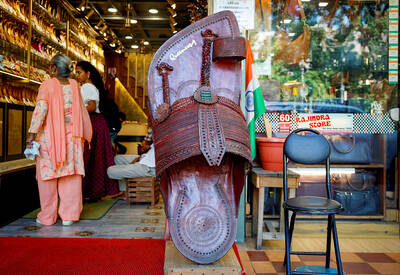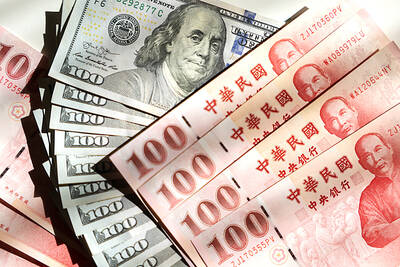Novartis AG bolstered its portfolio of multiple sclerosis (MS) treatments on Friday by agreeing to buy an experimental drug from GlaxoSmithKline PLC for up to US$1 billion, the company said.
Novartis, the Swiss pharmaceutical giant, acquired the rights this year to use the drug, ofatumumab, to treat cancer and sells it under the name Arzerra. This was part of a broader swap of assets completed in March, in which Novartis took over Glaxo’s cancer drugs and Glaxo took on much of Novartis’ vaccine business.
The deal announced on Friday gives Novartis all remaining rights to ofatumumab, which is being developed to treat relapsing, remitting multiple sclerosis and other autoimmune conditions.
Having the rights under one ownership would avoid the complications that could arise from having two companies selling the same drug for different uses. The deal also bolsters a portfolio of drugs Novartis is developing for multiple sclerosis, centered around its blockbuster pill Gilenya.
Novartis is to pay US$300 million upfront to Glaxo and another US$200 million once late-stage clinical trials start. Novartis would make payments of up to US$534 million on top of that, depending on whether development targets are reached. The company is also to pay royalties of up to 12 percent to Glaxo on any future net sales of the drug.
“Novartis is pleased to further reinforce our commitment to neuroscience and to add an exciting new treatment to our strong MS portfolio,” Novartis Pharmaceuticals division head David Epstein said in a news release.
In addition to Gilenya, Novartis sells a multiple sclerosis drug called Extavia and recently began marketing a generic version of Teva’s Copaxone, one of the most widely used drugs for the disease. It also has some other drugs in development. Gilenya could lose patent protection starting in 2019. So filling the loss could be another reason for Novartis to want a new drug.
However, the market for multiple sclerosis drugs is crowded, which might limit the sales any new drug like ofatumumab could have.
Moreover, ofatumumab is only now ready to enter late-stage clinical trials, putting it a couple of years behind ocrelizumab, a similar drug being developed by Roche.
Both drugs deplete B cells, which are white blood cells that are part of the immune system. B cells are necessary to fight infections, but if they go awry, they can contribute to autoimmune diseases like multiple sclerosis or to lymphomas. Both drugs bind to the same molecule on the surface of B cells — known as CD20 — as Roche’s big-selling cancer drug Rituxan. Rituxan is not approved for multiple sclerosis, but it is approved to treat rheumatoid arthritis, another autoimmune disease.
Ofatumumab, a type of protein called a monoclonal antibody, was developed initially by Genmab, a Danish biotechnology company, which receives royalties on sales.
David Redfern, the chief strategy officer at Glaxo, said in a news release that the sale would allow the company to focus on core areas, including HIV, oncology and vaccines.
“We are pleased to have completed this transaction to divest the remaining rights in ofatumumab, crystallizing significant additional value for GSK shareholders,” Redfern said.
The deal is expected to be completed by the end of the year.

MARKET LEADERSHIP: Investors are flocking to Nvidia, drawn by the company’s long-term fundamntals, dominant position in the AI sector, and pricing and margin power Two years after Nvidia Corp made history by becoming the first chipmaker to achieve a US$1 trillion market capitalization, an even more remarkable milestone is within its grasp: becoming the first company to reach US$4 trillion. After the emergence of China’s DeepSeek (深度求索) sent the stock plunging earlier this year and stoked concerns that outlays on artificial intelligence (AI) infrastructure were set to slow, Nvidia shares have rallied back to a record. The company’s biggest customers remain full steam ahead on spending, much of which is flowing to its computing systems. Microsoft Corp, Meta Platforms Inc, Amazon.com Inc and Alphabet Inc are

Luxury fashion powerhouse Prada SpA has acknowledged the ancient Indian roots of its new sandal design after the debut of the open-toe footwear sparked a furor among Indian artisans and politicians thousands of miles from the catwalk in Italy. Images from Prada’s fashion show in Milan last weekend showed models wearing leather sandals with a braided design that resembled handmade Kolhapuri slippers with designs dating back to the 12th century. A wave of criticism in the media and from lawmakers followed over the Italian brand’s lack of public acknowledgement of the Indian sandal design, which is named after a city in the

The US overtaking China as Taiwan’s top export destination could boost industrial development and wage growth, given the US is a high-income economy, an economist said yesterday. However, Taiwan still needs to diversify its export markets due to the unpredictability of US President Donald Trump’s administration, said Chiou Jiunn-rong (邱俊榮), an economics professor at National Central University. Taiwan’s exports soared to a record US$51.74 billion last month, driven by strong demand for artificial intelligence (AI) products and continued orders, with information and communication technology (ICT) and audio/video products leading all sectors. The US reclaimed its position as Taiwan’s top export market, accounting for

INVESTOR RESILIENCE? An analyst said that despite near-term pressures, foreign investors tend to view NT dollar strength as a positive signal for valuation multiples Morgan Stanley has flagged a potential 10 percent revenue decline for Taiwan’s tech hardware sector this year, as a sharp appreciation of the New Taiwan dollar begins to dent the earnings power of major exporters. In what appears to be the first such warning from a major foreign brokerage, the US investment bank said the currency’s strength — fueled by foreign capital inflows and expectations of US interest rate cuts — is compressing profit margins for manufacturers with heavy exposure to US dollar-denominated revenues. The local currency has surged about 10 percent against the greenback over the past quarter and yesterday breached